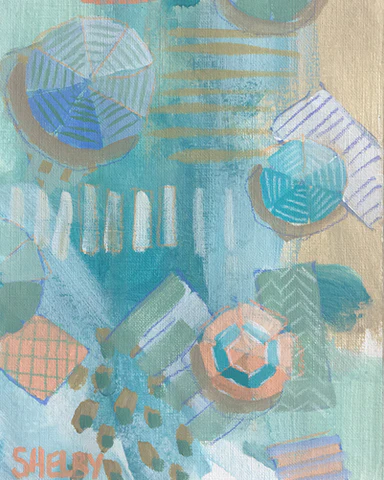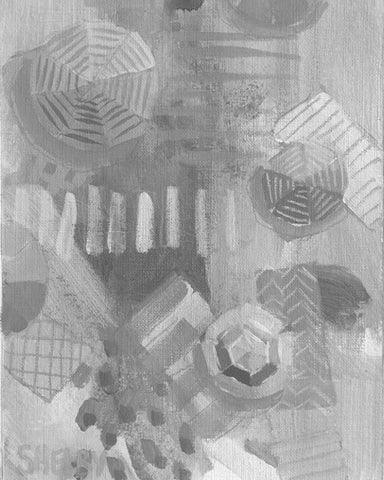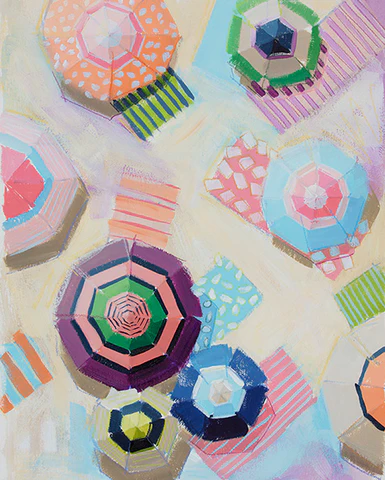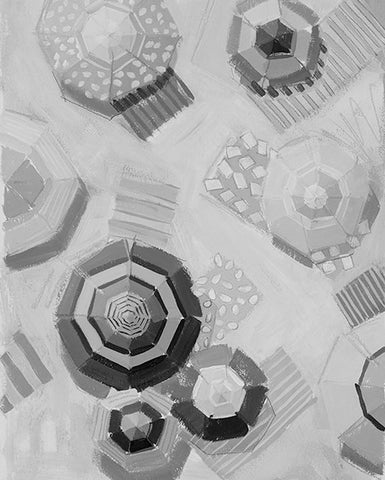Do your paintings look technically fine, but for some reason they’re just not interesting to look at?
As we round out our discussion on value, let’s tackle a topic that will help you troubleshoot one reason your painting may feel unfinished, or just not quite right.
We’ve discussed how to identify the values while setting up a scene to paint and how colors have different values.
In case you missed those posts, feel free to brush up How To See Value and Value in Different Colors.
Now let’s learn how to identify if value is a problem in your painting once you’ve begun.
Take a look at one of my early umbrella paintings in full color:

Does it feel off to you? Let’s begin to break it down to find out why it’s not singing:
- The composition is balanced
- There are no tangents
- It adheres to the “rule of thirds”
- ‘There is enough space for elements to breathe
- The colors are serene and speak to the tone of the scene
So, what gives?
Let’s use some photo editing software to remove the color and see if that gives us some more clues:

We see in this grayscale version that the shapes begin to blend into the background and the scene is hard to read.
That’s because there isn’t enough variety of value.
To avoid this issue from the get-go, it’s best to do some color tests once you’ve chosen your palette.
Start by making a value scale with grays – always a good exercise to revisit. You can also keep one on hand for a jump start on this part of the painting process. With your value scale nearby, begin comparing your selected colors to their equivalent in gray. The best compositions have a variety of lights, darks, and mid-tones. Your color palette really doesn’t matter, as long as you use some of each value.


This Umbrella painting uses a nice range of values
The good news is, if you find your painting does not have enough value, you can simply mix more paint and go over the areas that could use adjustment.
In the Creative Circle, we are diving into value and members learn how to put these concepts into practice. See what else the Creative Circle offers to help you grow as a painter.
COMMENTS